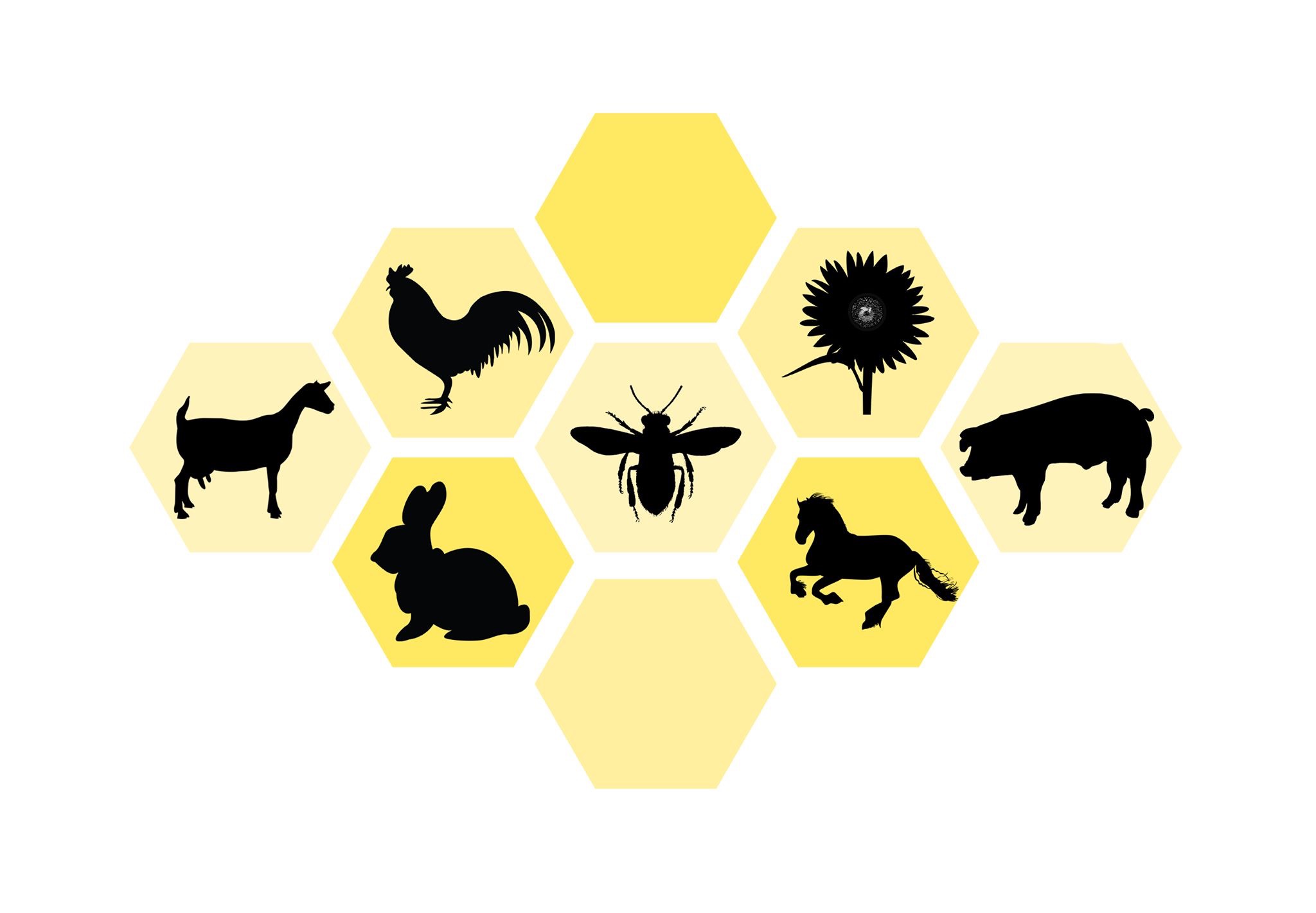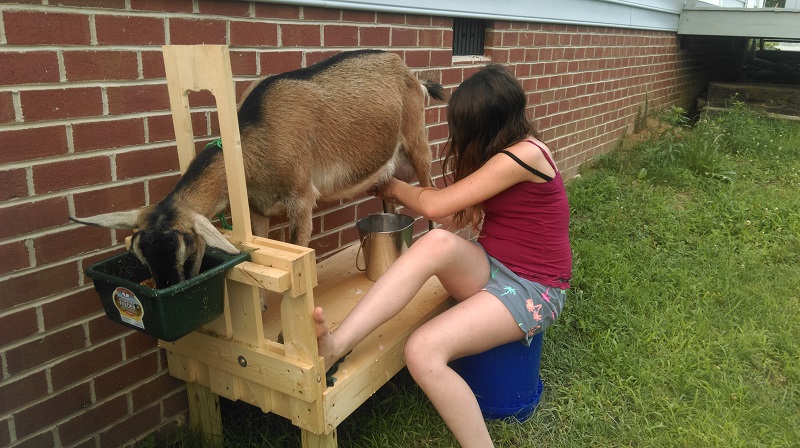Dairy & Herdshare Planning Pt 1 - housing and milking facilities for the past 3 years
- Sarah Williams

- Sep 14, 2019
- 5 min read
Last time I blogged, I announced that we are planning a manufacturing grade dairy, primarily so that we can use the excess summer milk that we generate from the herd. Because goats are very seasonal breeders (I have Alpine and Saanen does) and I am currently not interested in forcing early cycling, if I want to have enough December milk for my members, I have about triple the volume I need during the summer.
I know that this is not a fantastic business model, and it certainly does cut into my profit margins each year, as I am managing more animals than I would truly need if I were running a leaner operation. But the fact is that I have used the higher numbers as a learning opportunity for management. I have also been able to utilize much of that milk through a chevre Herdshare-CSA program, where I signed temporary members into a hybrid herdshare-CSA agreement, and they received chevre every week for 14 weeks (more about that in a future post).
As I mentioned earlier, I do not plan on changing my herdshare program. I am very happy with 30-40 members year-round, and do not intend to decrease or increase my membership numbers. I also am pretty happy with milking 12-15 does every day. Here is another area that I am not so lean on - I dam raise and only milk once a day - I promise to post more on that in the future as well. With my life currently as is and no changes in the near future (full-time job and a teenager in addition to farm work), OAD milking is about all I can manage without losing my sanity or health. That definitely results in less milk, but I understand the consequences of my choices and am happy with it.
The decision to abandon the old dairy goat barn and build a new one was not a decision that we made lightly. It was a 24 foot x 24 foot converted run-in shed on a steep slope. That slope made terracing necessary if we were to stay, and the way the barn was situated on the slope would have put the milking parlor and milk room below the animal housing (likely not a popular idea with the inspector). Because of the animal traffic, the slope was not able to heal and green over properly, and the building was an eyesore, even after recladding with new metal siding. Additionally, the shed needed an entirely new roof system. Essentially, we would have taken it down to the 6 poles and started again, but with the ground work needed, it was just too big of a push. We decided to move uphill to the high flat spot for our dairy barn.
Milking Parlor
The milking parlor in the old barn was particularly interesting. If I tell you I was on a budget, I mean I was making pennies squeal for this milking parlor. We actually ran our first few months of our herdshare program milking in an old horse trailer. That was actually pretty convenient, as we could move the animals around. However, once we had 3 does in milk over just the one, the logistics became a little difficult.
Moving into the old barn, we took a 12x12 section and created a raised floor using concrete deck piers, 2x4s, plywood, and a linoleum remnant from Lowes. The linoleum was fabulous - a $60 remnant was easy to keep sanitary. I didn't glue it down, so when it got really nasty after 2 years, I replaced it with a new one and it was like having a new milking parlor. I started with one milk stand (the old reliable Fiasco Farm plan), and in year 2, I added a second stand. I added a third stand in year 3, and they sit side by side, with a rubber mat covering the conjoined platforms.
My favorite part was the utility sink and drain. I found a $20 utility sink at the ReStore store, and I strapped a water hose with an on/off toggle on it. For the drain, we started with a 5-gallon bucket, and I would just empty it whenever it filled. Eventually, Dennis drilled a hole in the bucket and connected a hose to the bottom that routed out of the barn, so that I never had to empty it again! This was a really clever way to get water and drainage in the barn, and since I only use about 6 gallons of water to sanitize and clean the equipment, the impact on the pasture was minimal.
Milking
I machine milk in Spring, Summer, and Fall, but when I have less than 6 does in milk, I hand milk. This usually happens in winter - they're not quite as full to the brim in the winter either, so it's easier on my hands. The advantage of hand milking in winter is not so much water thrown around - this too is an advantage when you don't have heated milking parlors!
I started with a Simple Pulse, and continued tweaking it to the system I've used for the past 18 months. It uses the Simple Pulse vacuum and air tank, but I've moved to a Hamby 3 gallon pail with the pulsator on the lid, an in-line milk filter, and the GEA TopFloZ inflations. This is a fantastic, compact system that I plan on using until I put a pipeline in (3-5 years down the road, I estimate). Over the years, I've developed my cleaning protocol such that I use approximately 6 gallons of water to efficiently clean and sanitize the machine (another post with that later as well). Continuous monthly milk tests with consistent 200-1200 cfu/mL bacterial counts (much less than the 20,000 cfu/mL maximum for licensed dairies) confirm that this protocol works with this system.
Bottling & Cooling Milk
I am still bottling in my home kitchen - as mentioned in my facilities article, as long as you dedicate soaps, brushes, and an area for your milking supplies, and keep all raw meats a significant distance away, you can use your kitchen for bottling clean raw milk.
I like to follow licensed dairy procedures for milk cooling - down to below 40 deg F within 2 hours of completing milking. I do this by bottling into half gallon mason jars, and fast-cooling them in the freezer for 45 minutes before transferring to the fridge.
Of course all of this will be done in our milkroom in the future, but it has worked well for the past 4 years (to the detriment of an uncluttered kitchen).
So that's where we are right now. The next post will go over the blueprint of our dairy, and what we have learned from our discussions with the dairy inspector.






















Comments